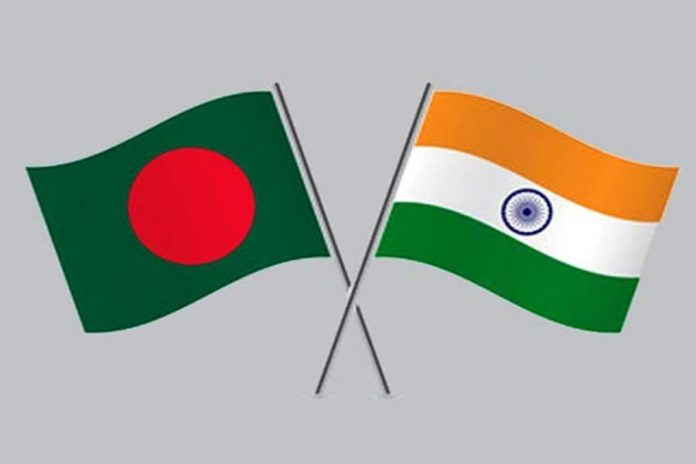This article has been written by Oishika Banerji, from Amity Law School, Kolkata. This is an exhaustive article dealing with the grounds which created a gap between India and Bangladesh driving the latter towards growth and leaving the former behind.
Table of Contents
Introduction
There are several factors that contribute to the growth and development of a country. It is the interdependent working of all these factors that results in the proper functioning of a country. Back in school, the books of geography, history and political science introduced several arenas responsible for building a relationship between the two South-Asian neighbouring countries namely, Bangladesh and India. What these books failed to highlight were the factors that worked behind these countries playing an immense role in throwing light to the changing faces of these countries. After the setting in of the liberalisation atmosphere, it was a clear observation that India was growing wealthy compared to that of Bangladesh. This growth was not a sign to cherish because the pitfalls that accompanied this richness could not be ignored. Bangladesh, on the other hand, exceeded in the quality of living which India terribly failed at. Be it the Global Hunger Index, the Gender Development Index or the World Happiness Index, Bangladesh has won the race between the two countries. Conflicting past along with disparity in basic living mechanisms became majorly responsible for creating a comparison between the two countries. This article, therefore, delves into various factors that lead Bangladesh to walk ahead of India in a very short duration. The three major challenges that any developing country has to go through have been laid down hereunder:
- Population growth
- Administrative defaults
- Corruption
Taking these factors into account, it will relatively become easier for us to determine as to how Bangladesh has grown better in comparison to India in recent years.
India, a country of different folds
A country which carried on its issues after independence, India has always been a country powered by heterogeneity in every aspect responsible for its growth, development as well as a downfall. An emerging country in the language of economics, India has been a home for poverty, unemployment, underemployment, social issues, conflicting laws and customs, corruption, a disparity between rich and poor in the society, lack of basic amenities towards living, illiteracy, gender-defined roles, inequality in terms of regional growth, job availability, per capita income, backlog of cases in courts, administrative efficiency, political interference, rise in geopolitical issues and many more. The discussion as to why India will be taking time to become better has been provided below in light to three important challenges faced by the democratic country in the past as well as in the present.
Rise in population of the country
Being the second-largest country in terms of population growth after China, India contributes to 15% of the world’s population. This population growth which was once considered to be a symbol of early development is responsible for several issues the country is facing and have been facing for over several years now. The major being economic constraints. India contributes barely 2% of the world’s economy although it must have contributed more because of such a rising population. The rise in population parallelly leads to a rise in unemployment rates which in turn results in rising poverty levels and this leads to the vicious cycle of poverty which in long run affects the country’s economy. Not only the economy, rise in population is responsible for causing food deficit, sanitation issues and plays an immense role in climatic changes that are affecting not only India but countries all across the globe.
India is a country which has faced the problem of illiteracy for several ages. Besides the huge number of illiterate adults, India has 90,000,000 children ranging between the ages of six and fourteen who are out of the reach of literacy although their educational provisions mandatory literacy for them. The loopholes that create the gap between education and the citizens of this country, majorly the children are poverty, infrastructural inefficiency, lack of trained faculties and staff, old educational system, convergent communication skills between the trainer and the trainee, gender differences and disparity between rich and poor in affording proper school for their children. The rise in illiteracy is a contribution to the vicious cycle of poverty as well which has been provided with an explanation above. With literacy there comes another factor that should not be ignored which is awareness. People in a country must be aware of the happenings in a country and also the way a country functions. This helps a country to develop as well. Awareness among the Indian people in different aspects is less and needs attention.
Administrative defaults and loopholes in the legal system
Although the judicial system in India has been structured beautifully along with the laws of the land, somewhere it lacks proper mechanism and functioning that becomes a drawback for the country as a whole. The major issues surrounding the Indian legal system have been laid down below:
- The backlog of cases in the majority of the courts– This is indeed a major issue in India and because of this there has been the introduction of fast track courts as well but the same cannot help tackle the situation as well. The public is thereby losing hope from the judiciary due to delay in dispensation of justice. Although it is just an inference, the fact would not take time to be digested.
- Discrepancies in communication between the court and the people– An issue which does not always come under the spotlight is the lack of information among the people of this country and the courts. In order to get away with this issue, court hearings were to be made open to the public in large for certain cases but then like all good policies in the country, implementation lacked. Further, half of the population avoid visiting courts because of the lengthy, expensive procedure they have to go through in order to get access to justice.
- Lack of transparency– Independence of the judiciary is a necessity for any country. Judiciary acting under any influence is harmful to the country as a whole. In the present scenario, the lack of transparency in a judicial proceeding has increased due to gross interference of media, politics and other organs of the government which acts as a chilling effect for the people of this country.
- Lack of legal awareness– As has been discussed previously, citizens of this country lack awareness on legal grounds, the consequence of which is an increase in rates of crime not being reported in the society. Not only for the prevention of crimes, but basic legal awareness is also a necessity to realise one’s rights and utilize them whenever required.
These being some of the loopholes existing in the Indian legal system, there are many more to explore and understand and therefore, this list of loopholes is not exhaustive by nature.
Corruption: the root of every problem
Corruption is that insect that eats away a good part of every process towards the development of a country. A corrupt system can never give birth to good products and the lack of good products is detrimental for any emerging country. Since 1991, India has experienced several corruption scandals as well where corruption has been experienced in different forms. As a preventive mechanism, the Prevention of Corruption Act, 1988 was brought to effect followed by the Prevention of Money Laundering Act, 2002 which was further amended. It would not be wrong to say that the Right to Information Act, 2005 is another essential wheel in the hands of the people of this country to drive away corruption. The problem lies in the application of such acts in an effective way to let it fulfil its purpose. Further, the government of India is also supportive with the Central Vigilance Commission (CVC) which has been authorized as the ‘Designated Agency’ to receive written complaints about disclosure of any allegation of corruption or misuse of office and to recommend appropriate action for the same. But at the end of the day what is important is accountability on the part of the organs of the government in a democratic setup like India. The requirement for the eradication of corruption is immense in order to let the country grow and develop from various aspects.
Booming Bangladesh
One of the most remarkable success stories of among Asian countries is the story of Bangladesh that reached remarkable heights over the years. The success story of Bangladesh does not provide concrete answers rather leave clues to make oneself acknowledge the reason behind booming Bangladesh. Several experts have opinionated that it is the change in patterns of political and business scenarios that play a significant role as the face of booming Bangladesh. The country has adopted inclusive development pattern for years now which literally denotes all the services, facilities, or items which are normally required The significant issue that surrounds this successful country is that the GDP of Bangladesh would hike up for the money or income from negative sources which involve payment of tobacco (cocaine, heroin, Dauphine, ganja) and pay of destructive objects (arms ammunition, others military equipment, explosive harmful to the human body). The comparison has been drawn with regards to India in this article in consideration with the ways of becoming better in such a short span of time because both India and Bangladesh are developing countries but the barriers associated with their growth and development are different.
Population growth scenario in Bangladesh
With a Gross Domestic Product (GDP) of 7.1% as of 2016, Bangladesh is the 2nd fastest growing country in the world. But for any growing country, population growth becomes a problem if not handled carefully with the available resources and strategies. For Bangladesh, the process of handling the rapid growth of population has been successful for the preventive checks that have been adopted by the country to bring under control the population growth. The same has been delivered by means of community-based approach, recruitment of married village women by providing training in basic medicine and family planning that is inclusive of different birth control methods like contraceptive pills and condoms and suggesting women for clinical contraception.
The Bangladesh government has taken remarkable steps to prioritized girls’ education so educated women have opportunities to work outside as well. Such steps have been implemented effectively and the results are visible in the form of statistics. After 1990, the economy of Bangladesh has been flourishing.
The country has taken control over population growth and reduced population growth substantially from 2.8% in 1990 to 1% in 2017. It is not that growth of population affects the growth of the country, but when that can be measured and put under limitations, the country does not slow down in its process of development. In Bangladesh, people have a good habit of using news media on a daily basis. Almost 27% of the population consume media for more than one hour a day. High usage of news media is a suggestive indicator that people in this country are very much aware of the happenings surrounding them. Further, Bangladesh prioritizes education to a greater extent in all of its national development frameworks. This also indicates the country’s willingness to grow its literacy rate.
Bangladesh and its legal system
Following a common law system, Bangladesh is a country which offers great powers in the hands of its Supreme Court. The Supreme Court of Bangladesh is not only vested with the power to interpret the laws made by the Parliament but also declare such laws as null and void when the situation demands and enforce fundamental rights. There are certain laws in Bangladesh that often stand contradictory with the Constitution of the country and therefore, it comes as an opinion of the Supreme Court of the country that such laws need replacement at every cost for a country to progress with the changing times. Indian Penal Code, 1860, Code of Criminal Procedure, 1973 and Evidence Act, 1872 are some of the laws that the court regards as outdated and are in urgent need of reformation. These laws are very much in effect in the Indian subcontinent as well but the replacement was never a topic for discussion. Conflicting laws of British origin and the present scenario of the country have led to unrest in many parts of the country and hence comes the opinion of an effective change.
A take on corruption in Bangladesh
Corruption is present in every country and therefore, it is the way the problem is looked after that receives attention. Political corruption has been most severe in Bangladesh due to its changing political environment. This has affected agriculture, the job industry and many other sectors of the country. The coping mechanism of the country is effective enough to handle such a level of corruption. The adaptation of the green revolution in the agricultural sector has resulted in the long-term growth of the same and has thereby contributed to the economic development of the country. Bangladesh is handling corruption by means of government intervention and interdependent policies. Application of these steps has been effective to some extent but there is a long way to go also.
Pandemic’20 and the new normal
With the outbreak of the pandemic, every country has moulded itself in a beneficial way in order to cope with the unnatural circumstances. Indian legal system adopted a virtual court system like many countries already have but the fact that many members of the legal fraternity failed to adapt to the new growing system leads to several defaults in court hearings. On the other hand, Bangladesh has progressed effectively because the government has focused on formulating a legislative framework to govern e-hearings by the courts during these unconventional times. This pandemic situation has indeed been a reality check for every country as self-dependency walked in the lives of people across the globe.
The process of handling lockdown by Bangladesh requires a lot of applause when compared to that of India. It will definitely be wrong to say that India has failed to process itself in a well-mannered way during this pandemic because the government has definitely tried and is trying to make things work but inefficiency lies in the process of issuing direction itself. Laws are insufficient to handle the situation followed by migrant labourers who are suffering immensely for the situation. Bangladesh being in a similar pandemic situation has been effective to handle the situation and put it under control by means of awareness campaigns, contained shutdowns etc. This very well reflects as to why Bangladesh has become better than India in a short time.
Conclusion
From the above discussions and comparisons on certain grounds about the two neighbouring countries India and Bangladesh, what can be inferred is both the countries have challenges in development from several aspects altogether but the approach of the two countries towards these challenges are completely different and significant to notice.
India has improved in several regions and is trying to build itself at a global level but the issues which are present in the country that result into both internal and external conflicts cannot be ignored for their serious nature. Bangladesh, on the other hand, is developing at its own speed with the problems which it already has but the speed of development has received attention globally for it is indeed praiseworthy. One thing which India should adopt from its neighbouring friend is to grow at its own speed and in its own way with the resources it already possesses.
This goes along with the English proverb that says that one must lay the carpet within one’s limit and not beyond which is exactly how Bangladesh as a country is functioning and, therefore, it has grown better than India in such a short period. Another essential element that is noteworthy for any country in the process of development is that its people must be aware of the happenings within the country which is comparatively more in Bangladesh than in India. Change in certain approaches and perspective of approaching a problem can leave no stone unturned for India to develop just like Bangladesh.
References
- https://indianexpress.com/article/opinion/columns/bangladesh-fares-better-human-development-index-india-6266942/
- https://ieg.worldbankgroup.org/sites/default/files/Data/reports/india_cae.pdf
- https://journals.sagepub.com/doi/pdf/10.1177/0256090915593832
- https://www.hilarispublisher.com/open-access/problems-of-development-in-bangladesh-causes-and-remedies-2151-6200-1000288.pdf
LawSikho has created a telegram group for exchanging legal knowledge, referrals and various opportunities. You can click on this link and join:
















